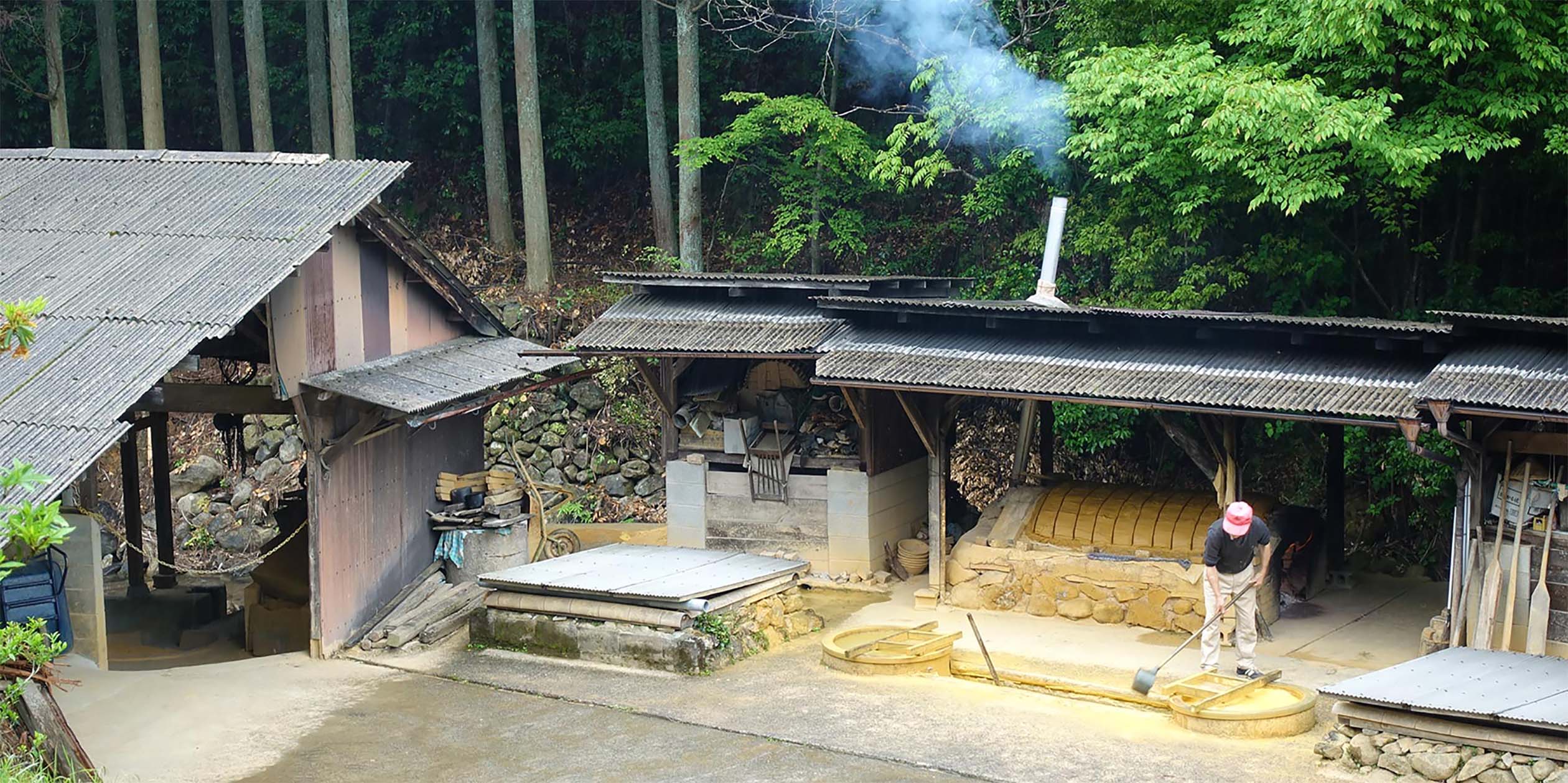Onta-yaki started during the Kyoho Period (1716-1735). Though the year cannot be specified, Onta-yaki is started by Mr. Sanemon Yanase of Koishiwara-yaki (Koishiwara-pottery) at Nakano-kiln and Mr. Jubei Kuroki lived in Yanase, Ohtsuru Village, Hita County. In addition, a village administrator, the Sakamoto family in Onta district joined them as the land provider, then the base of Onta-yaki was built.
From those verified antique potteries in the late Edo period and the Meiji Period, Onta-yaki products was classified as big pot, sake pot, pot with lid, storage crock, tea pot, sake bottle, bowl, plate, etc. Decoration technique includes "Uchikake", "Nagashikake", "Ameyu", etc. Most of them have no difference when comparing with the modern Onta-yaki.
A new breakthrough appeared from the late Taisho period to the early Showa Period (around 1920's), because of the adoption of techniques named "Tobikanna" or "Uchihakeme" and Mr. Muneyoshi Yanagi (who promoted the folk craft movement)'s visit of Sarayama in 1931. Since then, Onta-yaki was introduced to the world, becoming famous gradually and officially recognized as "Onta-yaki", while Onta-yaki was generally just called "Hita's thing" before. The first thing you will notice when you walk into the village, are the ancient style water-powered wooden hammers whacking away at piles of yellow clay. The thump-thump- thump of the hammers echoes through the entire valley, providing a unique soundtrack to your walk. Every house in the village is close to the river flowing through it and they all use the power provided by the water to get their clay powdered - the base of their ceramics.
The principle of the hammers dates back centuries at least: the wooden beam that carries the hammer has a large hollow carved in. That hollow fills with water, the weight of the water raising the hammer. After a few seconds, the beam is raised by that weight so high up that the water flows out - which lets the hammer whack down. The procedure repeats, repeats and repeats. You can see that some of the beams already have noticeable cracks in them - they will be replaced soon. The village consists of ten families, all with their large houses and all with their own kilns. All pottery here is produced in ancient ways. The water-powered hammers prepare the clay. The clay is then watered by hand and readied for the potter's wheel where the shapes of the plates, cups and bowls are formed by hand while the wheel is driven by the potters' feet. The typical Ontayaki patters are impressed on the ware manually with combs, brushes or irons.
Weather permitting, the wares are then dried on boards outside the houses before they go into the wood-fired kilns for burning and glazing.
No modern machinery is used in the production process at all. All wares are manufactured exactly the way they were when the village was set up 300 years ago. This, of course, has been only possible by maintaining a social structure of the most conservative kind. One young woman encountered at a visit to Onta relayed that she had grown up in a modern metropolitan area. She fell in love with an Onta boy and they married. That was the end of going to clubs and bars. She had to become a real potter's wife, spending all her waking hours on the family pottery work. She grew to enjoy that way of living, she said, though she admitted that it was tough in the beginning.






